Postcard History has discovered a recorded oral-history interview with Robert H. Hall, of Butte, Montana, done on November 28, 1965, by a representative of the Archives of American Art, a division of the Smithsonian Institution.
It is difficult to listen to the recording. There are three voices: first, the interviewer, a lady named Bette Hoag; second, Mr. Hall; and third, a person identified as Mr. X, thought to be Mr. Hall’s son Bob. To ascribe the characters, it can best be said, the questions are awkward, the grammar is atrocious, and the technology is primitive, but it is truly revealing and informative.
If your interest is keen, you may listen to the recording online at Oral history interview with R. H.(Bob) Hall, 1965 Nov. 28 | Archives of American Art, Smithsonian Institution | Archives of American Art, Smithsonian Institution (si.edu)
The earliest memories of Robert H. Hall are of when he and his three-year older brother were orphans living in an Anderson, Indiana, orphanage. Mr. Hall was adopted around age 2, but his brother was left behind. (Hall never searched for his brother and seemed to be indifferent about where he may be or even if he was still living). The adoption Mr. Hall remembers was about a blacksmith named Parsons who lived and maintained a forge in Florida, Indiana. Hall referred to Florida, Indiana, as a flyspot on the map about five miles from Anderson. In his teens, he remembers moving with the blacksmith’s family to Sandusky, Ohio.
After the move to Ohio, the blacksmith devoted most of his time to being a Church of God minister. Of particular interest was the fact that his wife was also an ordained minister who worked with her husband until he died. Mr. Hall seemed to think that Parsons was “pretty well off,” but he cared very little about an estate and ran off to Chicago with a step-cousin to make his own way. He confessed that he made his way, “peddling the Chicago Tribune.”
When asked he replied that he had been doing “drawins” since he was 9. He continued by telling how he earned his money in Chicago, how he found food, and how he stayed out of the cold Chicago weather.
Throughout the interview his voice is weak and gravelly. Words are slurred and truncated, and finally he tells about travelling west in empty railroad boxcars to Missouri, then Kansas and later to Montana and meeting his wife and having a family.
Bob Hall married Margaret Weisking on February 28, 1924.
He tells of his years as a hard-rock miner and a smelter for the Anaconda Mining Company. The interview ends with a discussion of his work with the Works Projects Administration (WPA) in Butte and ends with some talk about where Mr. Hall’s major art pieces are and who owns them. On that list is the U. S. Department of the Interior in Washington, D. C.
***
Bob Hall died on Saturday, April 18, 1970. He was 74. His obituary listed him among the finest of Montana’s artists.
***
Bob Hall never intended to be a postcard artist. He made and sold his sketches for one reason: to keep food on his table for his wife and three sons: Robert, Harvey, and Garland. The postcards attributed to him can be divided into four groups, examples follow:
Likely the first series, Historic Montana Buildings, appeared circa 1948:
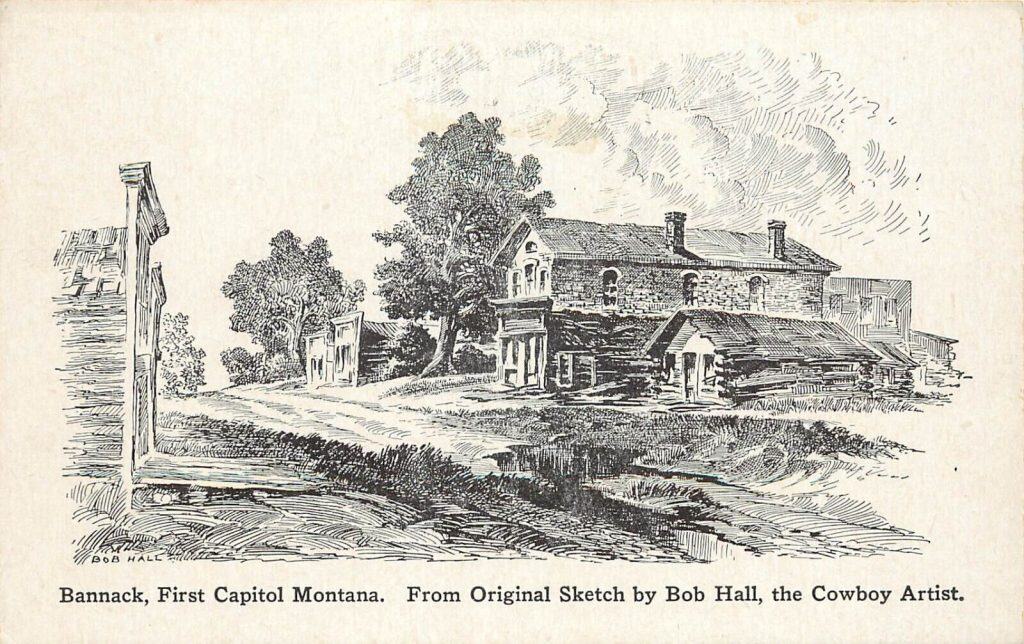
The 1950 cards are from the Glacier Stationery Company, Great Fall, Montana. This series was intended to illustrate the life and hard times on the Montana plains.
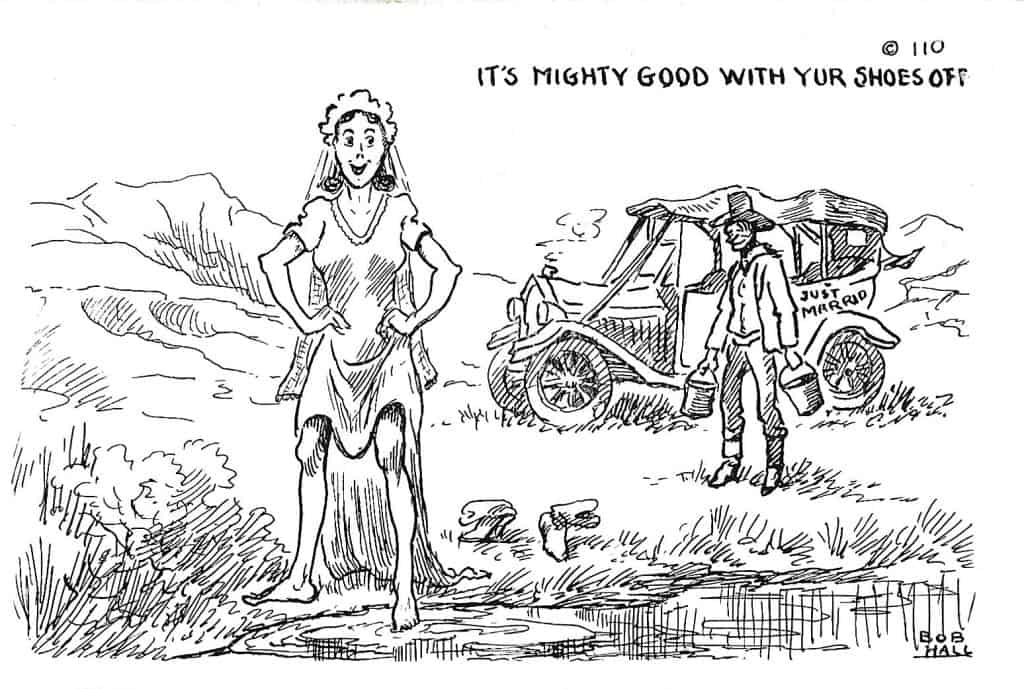
Also from the presses at Glacier Stationery Company came the Cowboy Funnies series and the Bronco Riding set.
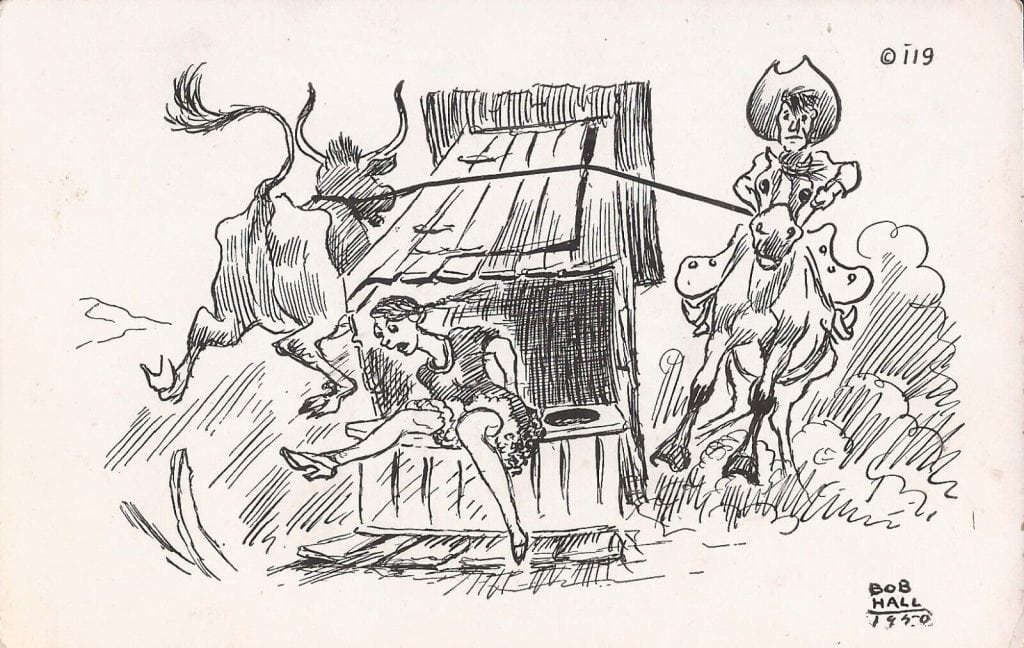
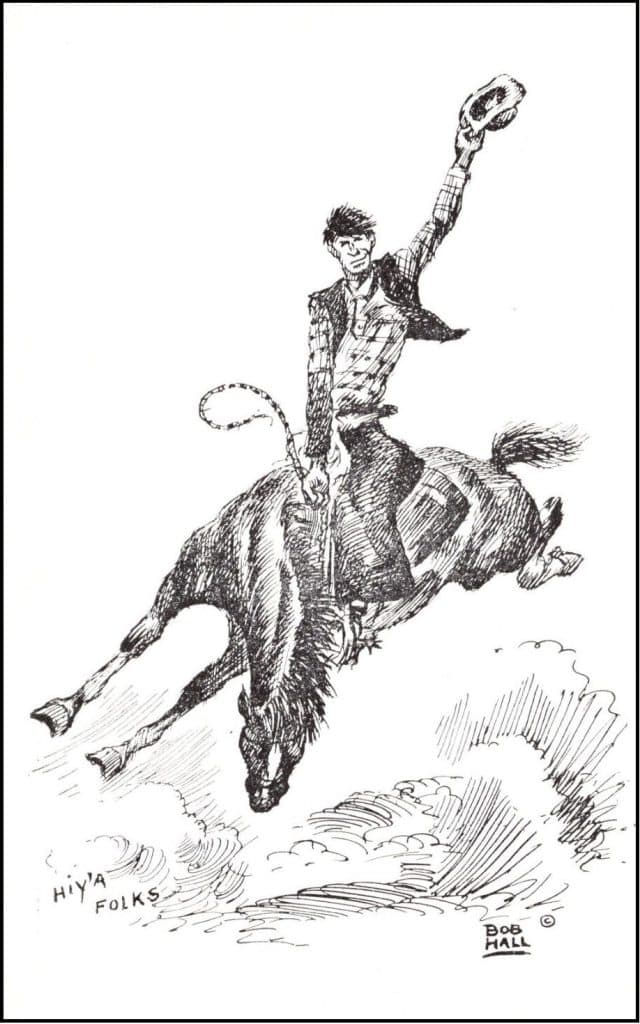
And for the lack of a proper name there are other scenes of early Montana and its people.
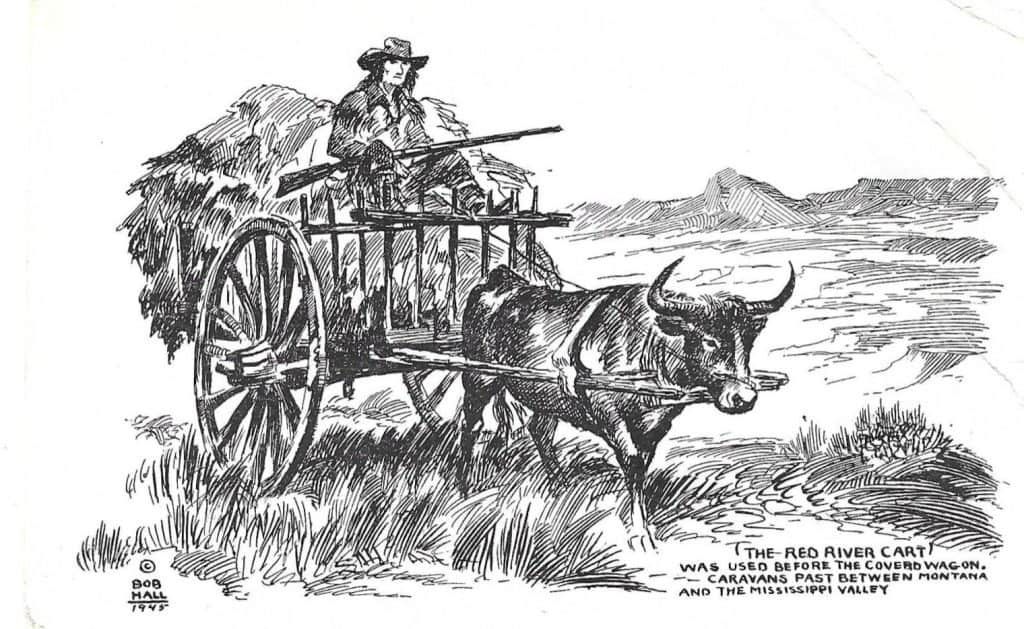
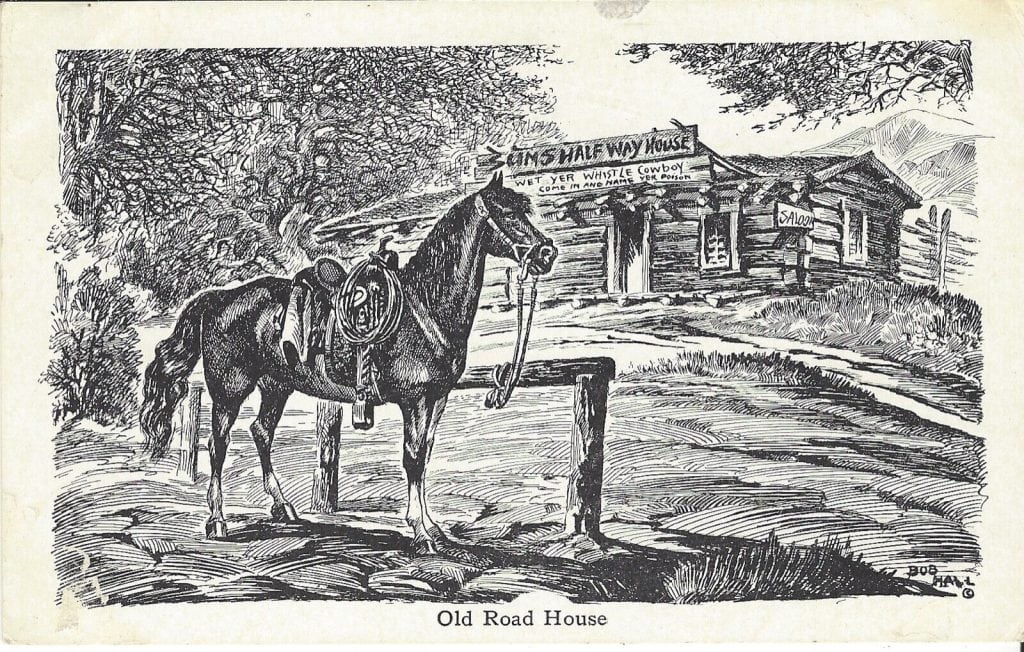


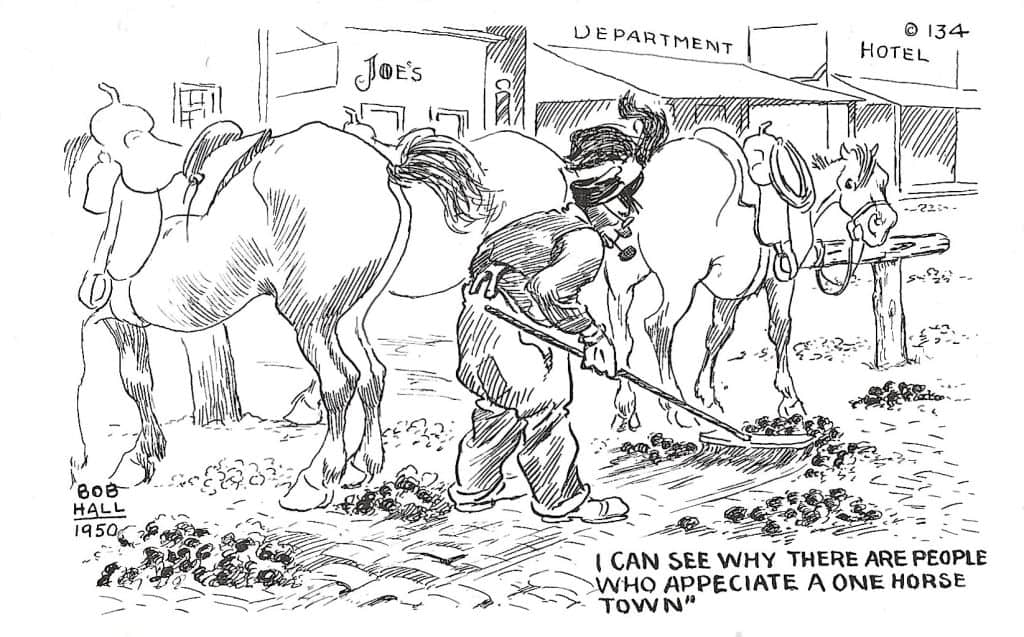

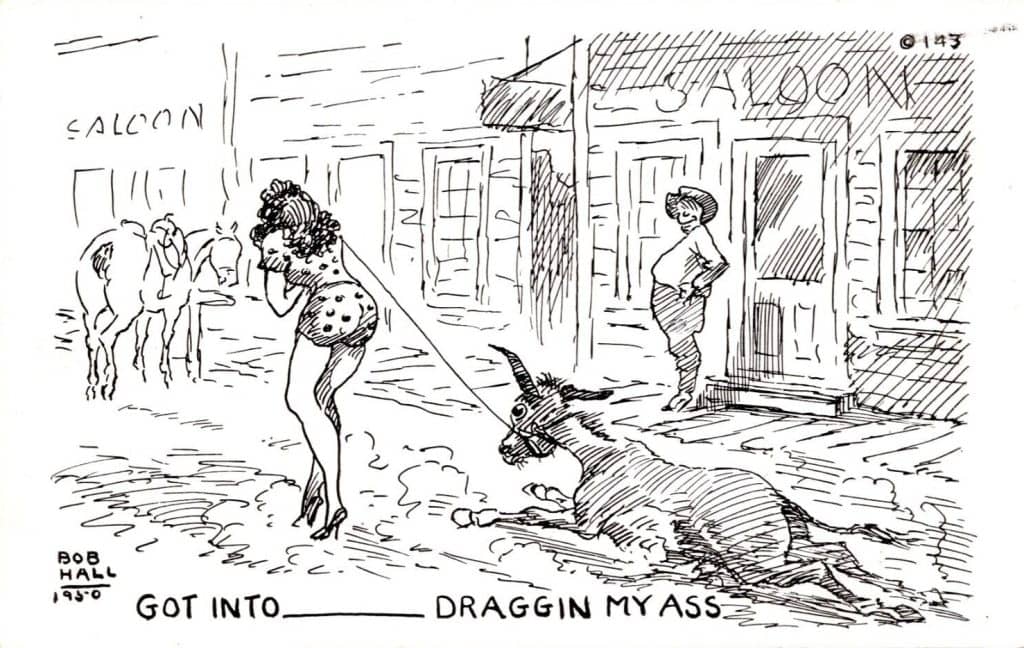

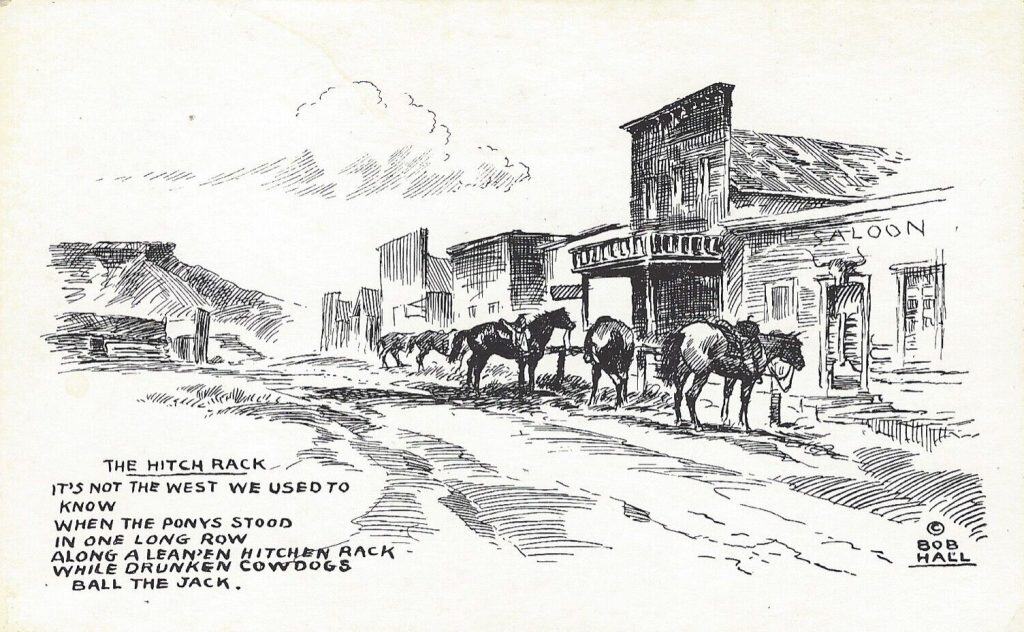
Thanks for this article, for I have several of these postcards.
You’re doin’ jus’ fine an’ dandy. 🙂
Great article! I’ve always liked pen-and-ink sketches. I’ll add Bob Hall to the signed artists that I look for at the next postcard show and sale.
I loved the Bob Hall story. I will be looking for his cards at the next show. I have seen one of the cards in the past, but did not have the story to go with it. Thank you.
Some of Hall’s cards are reminiscent of the bawdier efforts produced by Samuel Goldring, whose story appears elsewhere in this issue of Postcard History.
He was a pretty good artist. Thanks for sharing the history!
I found this page looking for examples of art by Bob Hall. I was looking through a copy of “The Longest Rope” by Baber, most of the illustrations are signed “BOB HALL”. His style definitely shines through.